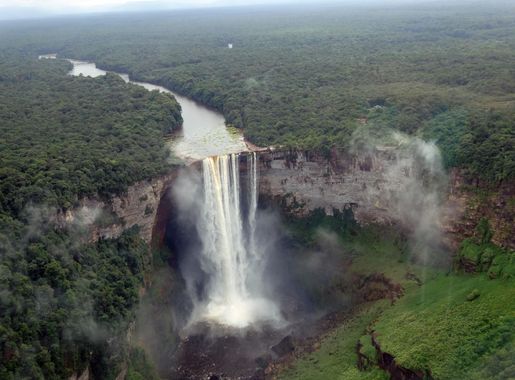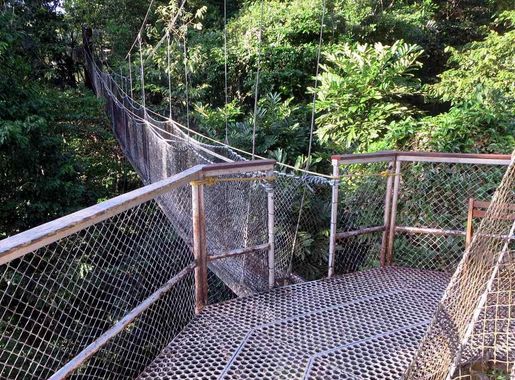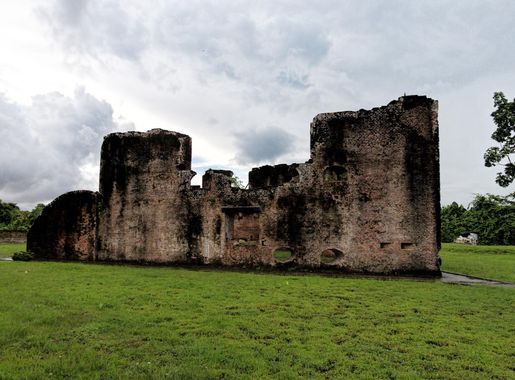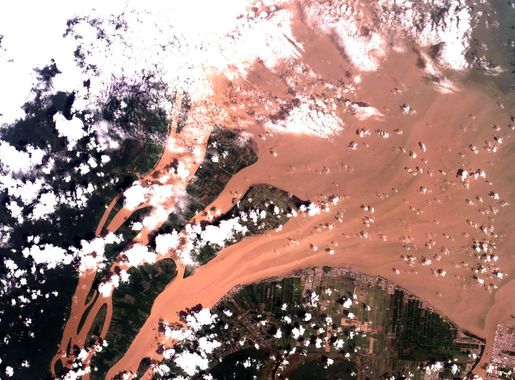
The Majestic Essequibo River: Guyana's Natural Treasure
Discover the Essequibo River: Guyana's largest river, teeming with biodiversity, rich history, and stunning landscapes, perfect for nature lovers and adventure seekers.
The Essequibo River, the largest river in Guyana, is a breathtaking destination for nature lovers and adventure seekers alike. Stretching over 1,010 kilometers, the river meanders through untouched rainforests, pristine wilderness, and a myriad of scenic landscapes that are a feast for the eyes. Whether you're interested in exploring the dense jungle, fishing, bird-watching, or taking a serene boat ride, the Essequibo River offers a wealth of activities that cater to all kinds of travelers. One of the river's most alluring features is its rich biodiversity. The surrounding forests are home to exotic wildlife such as jaguars, giant otters, and a variety of bird species. The river itself teems with fish, making it a paradise for anglers. Along its banks, you'll find small, traditional villages where you can immerse yourself in local culture and hospitality. The people of these villages are known for their warm and welcoming nature, offering a unique glimpse into the traditional way of life in Guyana. For those interested in history, the Essequibo River holds a treasure trove of stories. The river was a crucial route for early European explorers and has been a witness to Guyana's colonial past. You can visit historical sites like Fort Island, where remnants of Dutch fortifications still stand as a testament to the river's strategic importance. A trip to the Essequibo River is not just a journey through stunning landscapes but also a voyage through time, offering insights into the rich tapestry of Guyana's history.
Local tips in Essequibo River
- Plan your visit during the dry season (August to November) to avoid heavy rainfall and enjoy better accessibility.
- Hire a local guide for an enriched experience; they can offer valuable insights into the flora, fauna, and history of the area.
- Pack insect repellent and lightweight, long-sleeved clothing to protect against mosquitoes and other insects.
- Bring a waterproof camera to capture the stunning scenery and diverse wildlife you will encounter along the river.
- Learn a few basic phrases in the local language; it will be appreciated by the villagers and enhance your cultural experience.
The Majestic Essequibo River: Guyana's Natural Treasure
The Essequibo River, the largest river in Guyana, is a breathtaking destination for nature lovers and adventure seekers alike. Stretching over 1,010 kilometers, the river meanders through untouched rainforests, pristine wilderness, and a myriad of scenic landscapes that are a feast for the eyes. Whether you're interested in exploring the dense jungle, fishing, bird-watching, or taking a serene boat ride, the Essequibo River offers a wealth of activities that cater to all kinds of travelers. One of the river's most alluring features is its rich biodiversity. The surrounding forests are home to exotic wildlife such as jaguars, giant otters, and a variety of bird species. The river itself teems with fish, making it a paradise for anglers. Along its banks, you'll find small, traditional villages where you can immerse yourself in local culture and hospitality. The people of these villages are known for their warm and welcoming nature, offering a unique glimpse into the traditional way of life in Guyana. For those interested in history, the Essequibo River holds a treasure trove of stories. The river was a crucial route for early European explorers and has been a witness to Guyana's colonial past. You can visit historical sites like Fort Island, where remnants of Dutch fortifications still stand as a testament to the river's strategic importance. A trip to the Essequibo River is not just a journey through stunning landscapes but also a voyage through time, offering insights into the rich tapestry of Guyana's history.
When is the best time to go to Essequibo River?
Iconic landmarks you can’t miss
Iwokrama River Lodge
Experience the breathtaking beauty of the Guyanese rainforest at Iwokrama River Lodge, your gateway to adventure and nature.
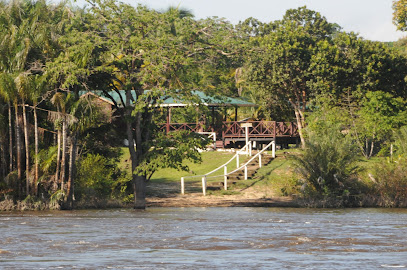
Fort Zeelandia
Discover the rich history of Fort Zeelandia, a must-visit historical landmark in Guyana, and delve into the tales of colonial encounters and battles.

Non-Aligned Monument
Discover the Non-Aligned Monument in Georgetown, a symbol of peace and unity among nations, reflecting the spirit of cooperation and solidarity.
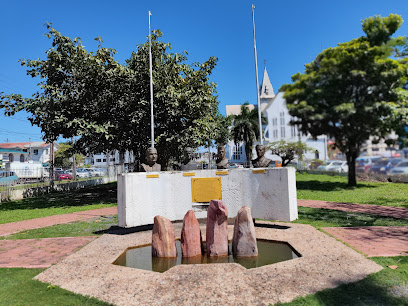
Bonasika Creek
Experience the breathtaking beauty of Bonasika Creek in Guyana, a serene retreat for nature lovers and adventure seekers alike.
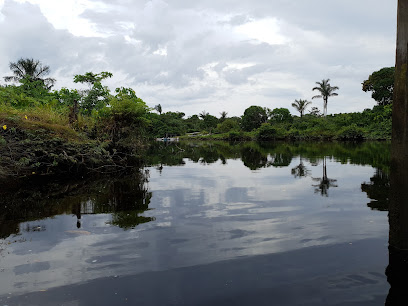
Sloth Island Nature Resort
Discover tranquility and adventure at Sloth Island Nature Resort, your serene escape on the Essequibo River in Guyana's lush wilderness.
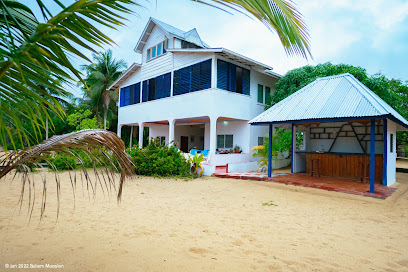
Essequibo River Source
Explore the enchanting Essequibo River Source, a historical landmark revealing the beauty and heritage of Guyana's majestic river.

Unmissable attractions to see
Stabroek Market
Explore the vibrant Stabroek Market in Georgetown, a cultural haven filled with local produce, crafts, and delicious street food.
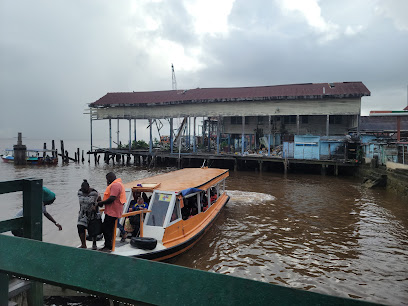
Demerara Harbour Bridge
Explore the stunning views and cultural significance of the Demerara Harbour Bridge, an architectural marvel in the heart of Georgetown, Guyana.
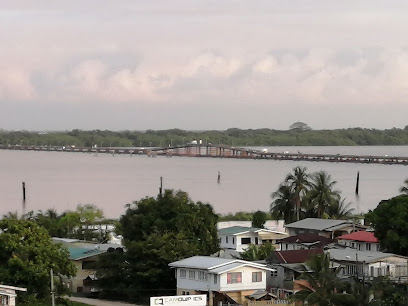
Joe Vieira Park
Experience serene nature and vibrant flora at Joe Vieira Park in Schoonord, an ideal retreat for relaxation and outdoor activities for all ages.
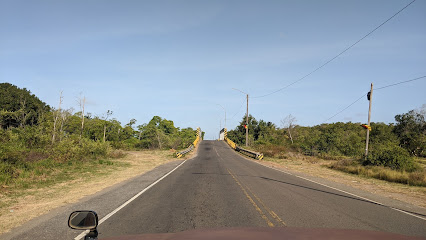
Essential places to dine
Hard Rock Cafe Guyana
Discover the perfect blend of American cuisine and rock culture at Hard Rock Cafe Guyana in Georgetown - an unforgettable dining experience.
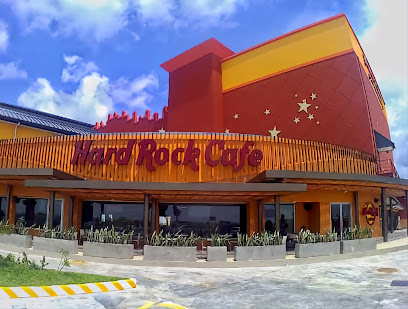
Oasis Cafe
Experience the vibrant tastes of South America at Oasis Cafe in Georgetown - your go-to spot for delightful breakfasts and cozy ambiance.
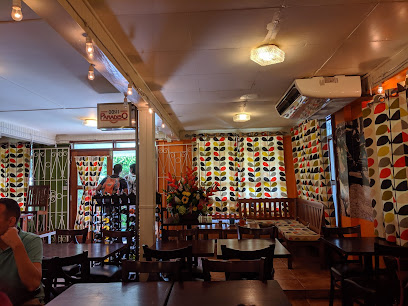
Aagman Indian Restaurant
Discover the authentic taste of India at Aagman Indian Restaurant in Georgetown – where every meal is a celebration of flavor.
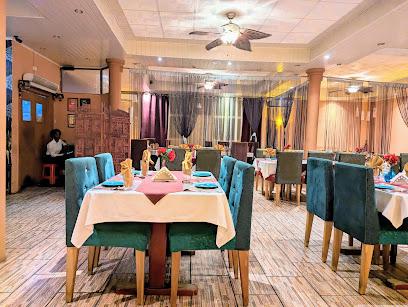
The New Thriving Restaurant
Discover authentic Asian flavors at The New Thriving Restaurant in Georgetown - where culinary tradition meets modern dining.
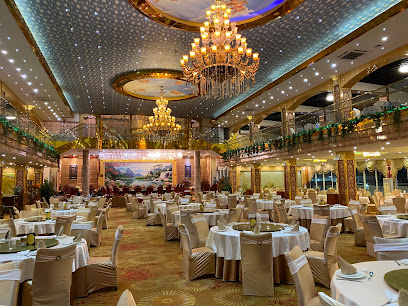
Maharaja Palace Restaurant
Discover authentic Indian cuisine at Maharaja Palace Restaurant in Georgetown – where tradition meets flavor in every dish.
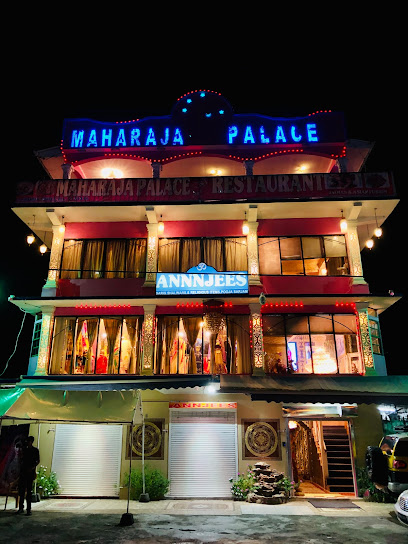
German's
Discover authentic Guyanese flavors at German's Restaurant in Georgetown - where every dish tells a story.
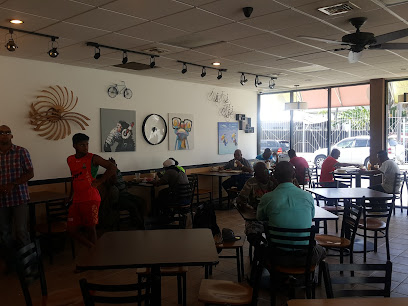
Shanta`s Puri Shop
Discover authentic Indian flavors at Shanta's Puri Shop in Georgetown - where every bite is a celebration of culinary tradition.
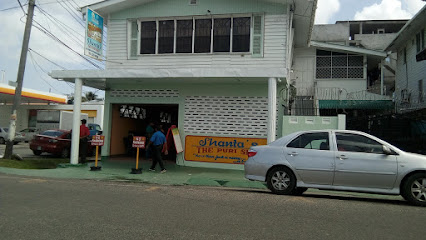
Amici
Experience authentic Italian cuisine at Amici in Georgetown—where every dish is crafted with passion and tradition.
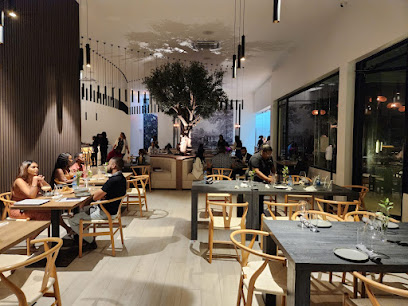
Backyard Cafe
Experience authentic Guyanese flavors at Backyard Cafe – a cozy haven for food lovers in Georgetown.
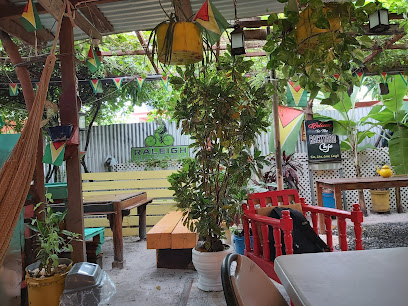
Jagdesh Duck Curry Bar
Experience authentic Guyanese cuisine at Jagdesh Duck Curry Bar in Anna Regina, famous for its flavorful duck curry and warm atmosphere.
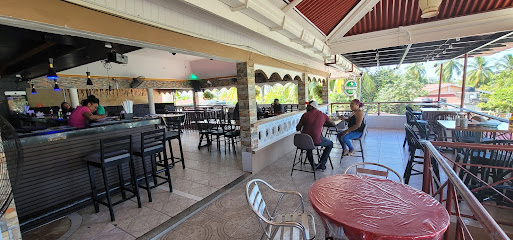
At-Tayyib Fried Chicken
Discover At-Tayyib Fried Chicken: A local favorite in Anna Regina serving up crispy delights and authentic flavors.
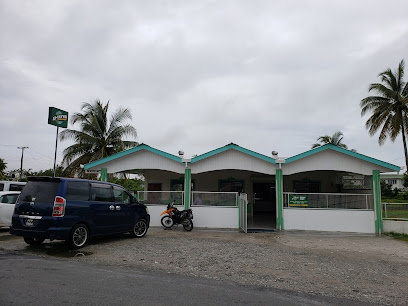
Terra Mare
Discover Terra Mare in Georgetown - where local flavors meet international cuisine in a cozy and inviting atmosphere.
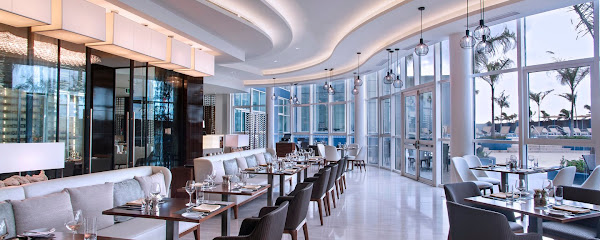
Fusion by Pegasus
Experience the perfect blend of local flavors and international cuisine at Fusion by Pegasus in Georgetown.
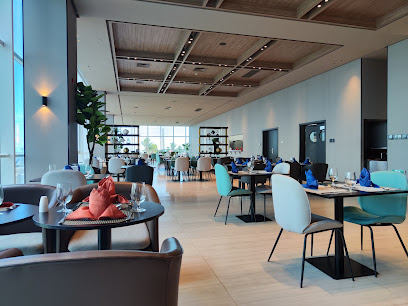
Lazeez Fusion
Experience the vibrant flavors of India at Lazeez Fusion in Georgetown - where every dish tells a story.
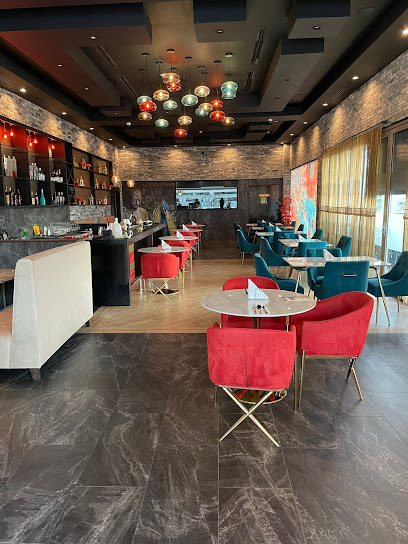
The Villagio Restaurant & Bar
Discover exquisite dining at The Villagio Restaurant & Bar in Georgetown—where local flavors meet international cuisine.
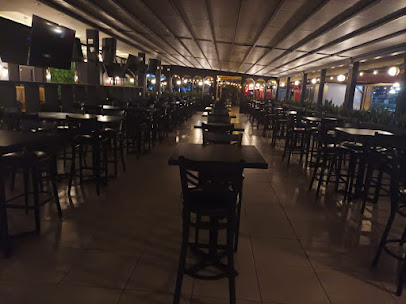
Markets, malls and hidden boutiques
Stabroek Market
Discover the vibrant culture and local commerce at Stabroek Market, an iconic marketplace in the heart of Georgetown, Guyana.
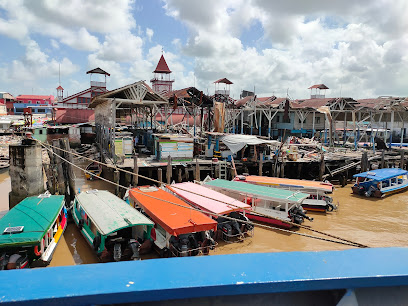
Giftland Mall
Experience the lively shopping and dining at Giftland Mall, Georgetown's premier destination for retail therapy and local culture.
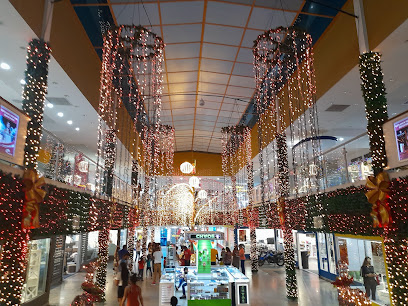
Shopping City Mall
Discover the vibrant Shopping City Mall in Georgetown, a retail haven with diverse shopping, dining, and entertainment options for everyone.
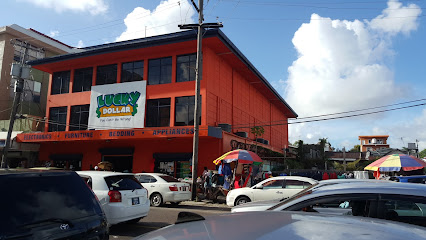
Amazonia Mall
Explore the vibrant Amazonia Mall in Georgetown, a premier shopping destination with diverse stores, dining, and entertainment options for all.
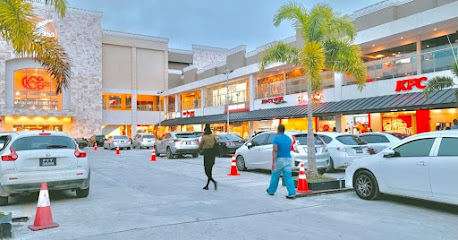
Parika Ferry Stelling East Bank Essequibo Guyana
Discover the cultural gem of Parika Ferry Stelling, where literature meets travel in the heart of Guyana.
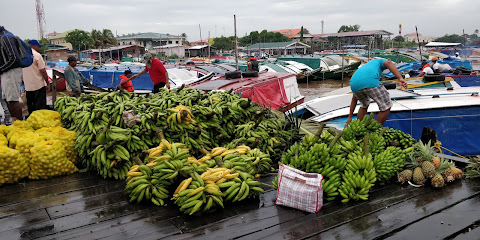
Mon Repos Market
Explore Mon Repos Market for a unique shopping experience filled with local produce, delicacies, and handcrafted souvenirs in North Mon Repos.
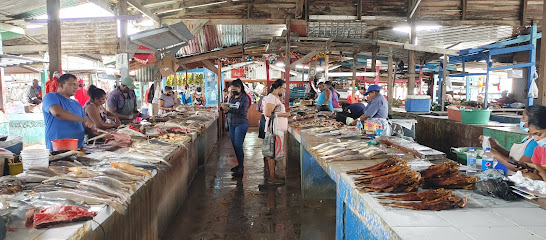
Skeldon Market
Explore Skeldon Market, where local culture and fresh produce come together in a lively shopping experience.
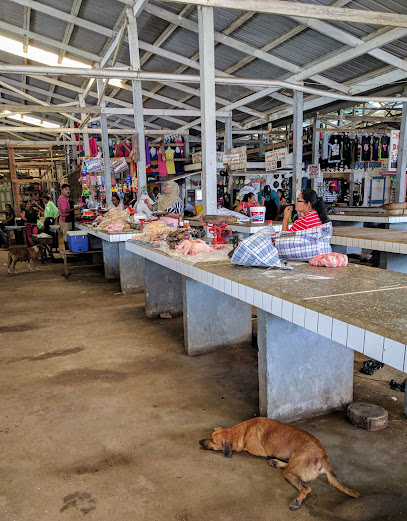
Rose Hall Market
Discover the vibrant essence of Guyana at Rose Hall Market, where local culture, fresh produce, and unique artisanal crafts await every visitor.
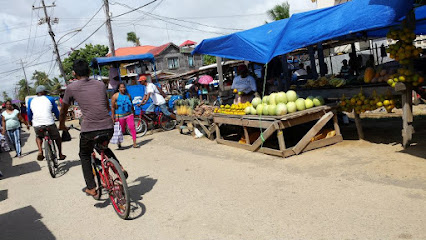
Giftland Officemax
Explore Giftland Officemax for a diverse shopping experience in Georgetown, offering everything from office supplies to unique gifts in a vibrant atmosphere.
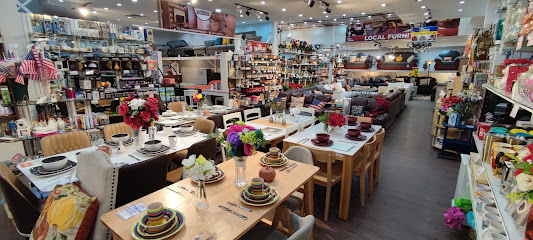
Port Mourant Market
Experience the vibrant culture and fresh produce of Port Mourant Market, a true gem in the heart of Guyana.
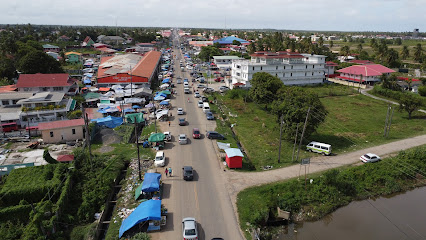
Bourda market
Discover the vibrant culture and fresh flavors of Georgetown at Bourda Market, a must-visit destination for every traveler seeking local experiences.
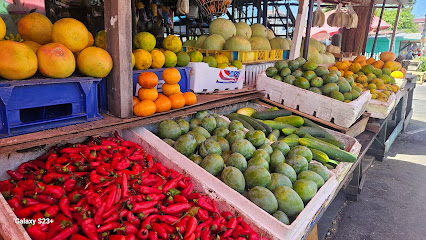
HUSSAIN GENERAL STORE
Explore the versatile offerings at Hussain General Store, your essential stop for hardware, tools, and auto parts in West Coast Demerara.
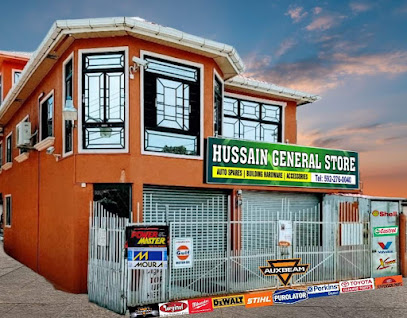
Bath Settlement
Experience the local charm at Bath Settlement, a grocery store in Waterloo offering a taste of community and variety for all your shopping needs.
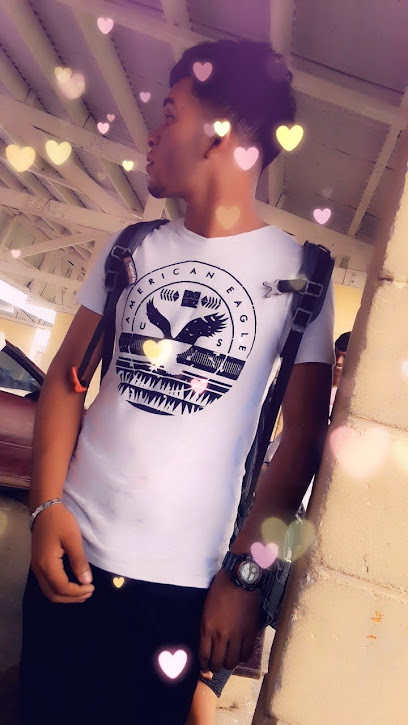
Brazo’s Giftshop
Explore Brazo’s Giftshop in Georgetown for unique local crafts, souvenirs, and gifts that embody the spirit of Guyana.
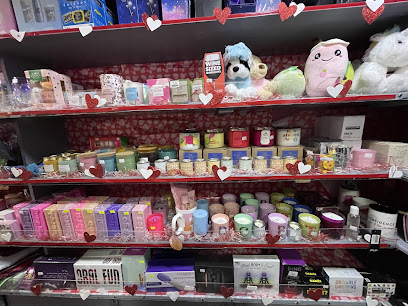
Guyana Marketing Corporation
Explore the vibrant tastes of Guyana at the Guyana Marketing Corporation, a supermarket showcasing the best local products and flavors.
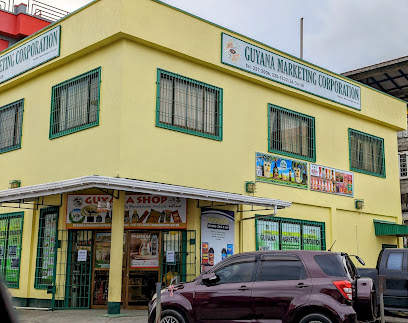
Essential bars & hidden hideouts
The Boardroom
Experience the thrill of sports and camaraderie at The Boardroom, Georgetown's premier sports bar located in Giftland Mall.

Seeta's Bar
Experience the vibrant nightlife of Georgetown at Seeta's Bar, where friendly service meets a lively atmosphere, perfect for unwinding with friends.
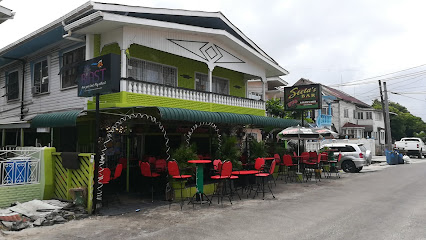
Shooters Bar
Discover the lively nightlife and local charm at Shooters Bar in Anna Regina, where great drinks and friendly faces await.
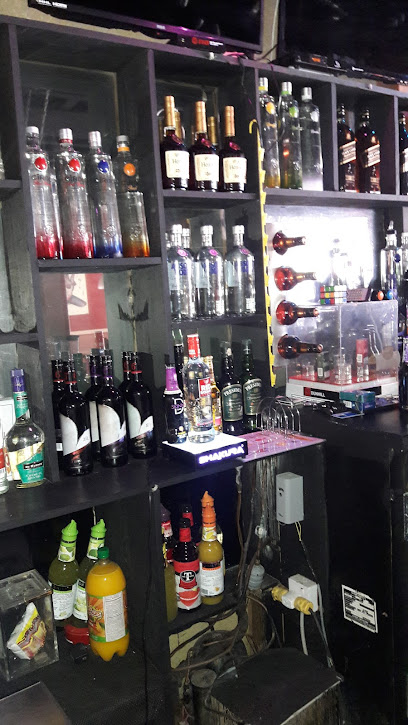
World of Cocktails & Casetello's Grill
Experience the vibrant flavors of Georgetown at World of Cocktails & Casetello's Grill, where cocktails and grill meet Caribbean charm.
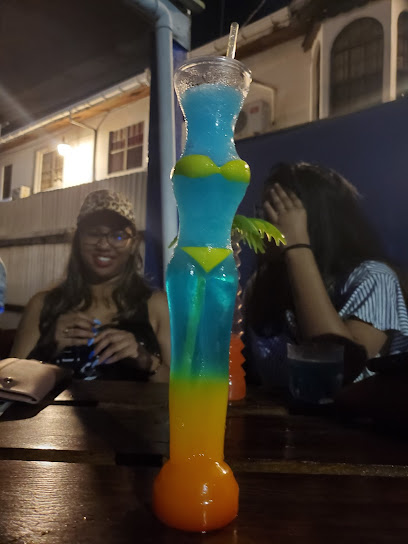
Gold Is Gold Hotel & Bar
Experience the essence of Georgetown at Gold Is Gold Hotel & Bar, where comfort meets local flavors in a cozy atmosphere.
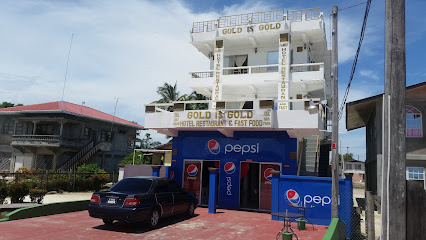
Strikey's Bar
Experience the vibrant local culture and refresh with affordable drinks at Strikey's Bar in Vreed en Hoop, a must-visit for tourists.
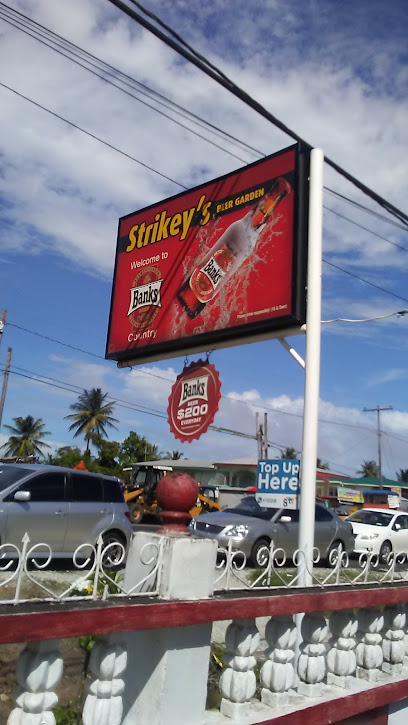
Xs bar and lounge
Discover the lively charm of Xs Bar and Lounge in CI, where great drinks and a vibrant atmosphere await every night.

Infinity Sports Bar
Discover the lively atmosphere of Infinity Sports Bar in Demerara, where great drinks, live sports, and fun meet for an unforgettable night out.

Rewind Bar and Lounge
Experience the vibrant nightlife at Rewind Bar and Lounge, where delicious drinks and lively music create the perfect evening escape.
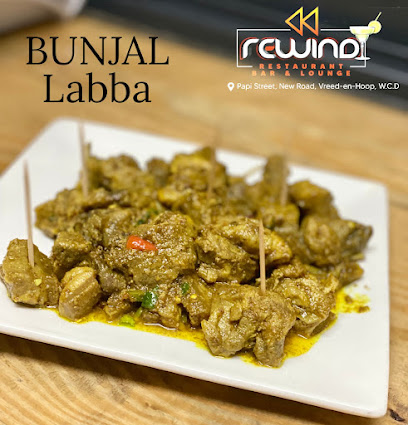
SHOTS Restaurant & Bar
Experience the vibrant flavors of the Caribbean at SHOTS Restaurant & Bar in Vreed en Hoop, a must-visit culinary destination for all food lovers.

Tropical Vybes Cocktail and Bar
Discover the vibrant spirit of Anna Regina at Tropical Vybes Cocktail and Bar, the ultimate destination for refreshing cocktails and lively entertainment.
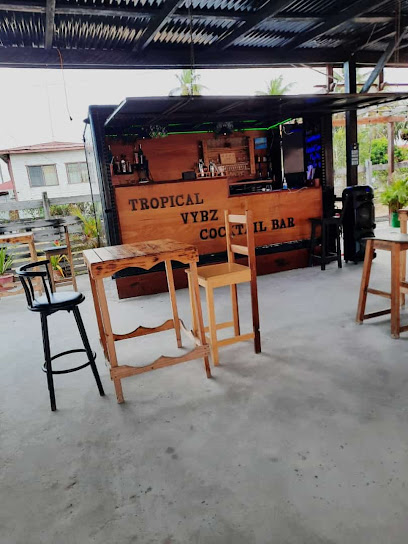
Elite Bar & Lounge
Elite Bar & Lounge: Experience the best of Anna Regina's nightlife with refreshing cocktails and a vibrant atmosphere.
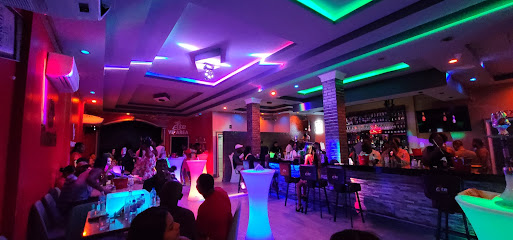
Carolyn Sports Bar
Experience the vibrant atmosphere of Carolyn Sports Bar in Essequibo, where local culture and refreshing drinks come together.

Reid’s Place
Experience the vibrant nightlife at Reid’s Place, Queenstown's premier bar for locals and tourists alike, offering great drinks and a friendly atmosphere.
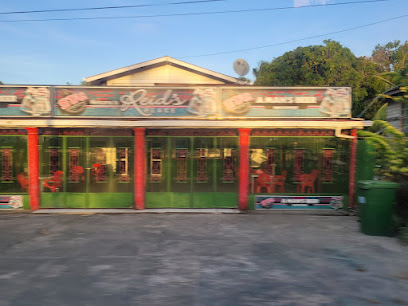
Buju's pool bar
Discover the laid-back charm of Buju's Pool Bar on the Essequibo coast, where refreshing drinks and stunning views await.
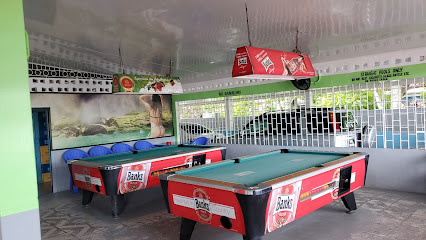
Local Phrases about Essequibo River
-
- HelloWah gwaan
[wah gwaan] - GoodbyeLater
[lay-ter] - YesYeah, man
[yeah, man] - NoNah
[nah] - Please/You're welcomeLeh meh
[leh meh] - Thank youTank yuh
[tank yuh] - Excuse me/SorrySarry
[sarry] - How are you?Yuh deh how?
[yuh deh how] - Fine. And you?Mi deh gud. An yuh?
[mi deh gud. an yuh] - Do you speak English?Yuh talk English?
[yuh talk English] - I don't understandMi nah get yuh
[mi nah get yuh]
- HelloWah gwaan
-
- I'd like to see the menu, pleaseLemme see de menu, please
[lemme see de menu, please] - I don't eat meatMi nah eat meat
[mi nah eat meat] - Cheers!Cheers!
[Cheers] - I would like to pay, pleaseLemme pay, please
[lemme pay, please]
- I'd like to see the menu, pleaseLemme see de menu, please
-
- Help!Help!
[Help] - Go away!Go way!
[Go way] - Call the Police!Call de Police!
[Call de Police] - Call a doctor!Call a doc!
[Call a doc] - I'm lostMi lost
[mi lost] - I'm illMi sick
[mi sick]
- Help!Help!
-
- I'd like to buy...Mi wan buy...
[mi wan buy] - I'm just lookingMi just looking
[mi just looking] - How much is it?How much dis is?
[how much dis is] - That's too expensiveDat too much
[dat too much] - Can you lower the price?Yuh can drop de price?
[yuh can drop de price]
- I'd like to buy...Mi wan buy...
-
- What time is it?Wah time it is?
[wah time it is] - It's one o'clockIt one o'clock
[it one o'clock] - Half past (10)Half ten
[half ten] - MorningMahnin
[mahnin] - AfternoonAftanoon
[aftanoon] - EveningEvinin
[evinin] - YesterdayYestadeh
[yestadeh] - TodayToday
[Today] - TomorrowTomorrah
[tomorrah] - 1One
[one] - 2Two
[two] - 3Tree
[tree] - 4Fo'
[fo'] - 5Fie
[fie] - 6Siks
[siks] - 7Seven
[seven] - 8Eight
[eight] - 9Nine
[nine] - 10Ten
[ten]
- What time is it?Wah time it is?
-
- Where's a/the...?Way deh...
[way deh] - What's the address?Wah deh address?
[wah deh address] - Can you show me (on the map)?Yuh can show meh (pan de map)?
[yuh can show meh (pan de map)] - When's the next (bus)?When de nex' (bus)?
[when de nex' (bus)] - A ticket (to ....)A tikkit (to ....)
[a tikkit (to ....)]
- Where's a/the...?Way deh...
History of Essequibo River
-
Long before European explorers set their sights on the Essequibo River, the region was home to various indigenous tribes such as the Arawaks, Caribs, and Warao. These native peoples utilized the river for sustenance, transportation, and trade. The riverbanks were dotted with small settlements where they practiced agriculture, fishing, and hunting.
-
In the early 17th century, Dutch colonizers established a foothold in the Essequibo region, making it one of the earliest European settlements in Guyana. Fort Kyk-Over-Al, built in 1616 on an island at the confluence of the Mazaruni and Cuyuni Rivers, served as the administrative center for the Dutch West India Company. The fort's strategic location allowed the Dutch to control riverine trade routes and defend against rival European powers.
-
In 1814, the British took control of Essequibo, along with the other former Dutch colonies of Demerara and Berbice, as part of the Treaty of London. This marked the beginning of significant changes in the region's administration, social structure, and economy. The British introduced new agricultural practices, expanded sugar plantations, and brought in indentured laborers from India and Africa, dramatically altering the cultural landscape.
-
Throughout the 19th and 20th centuries, the Essequibo River has been at the center of a territorial dispute between Guyana and Venezuela. The dispute stems from differing interpretations of historical treaties and colonial-era maps. While an 1899 arbitration awarded the territory to British Guiana (now Guyana), Venezuela has continued to claim the region. This ongoing dispute has significant geopolitical implications and remains a contentious issue in international relations.
-
Over centuries, the Essequibo River has become a cultural melting pot, reflecting the diverse heritage of its inhabitants. The region hosts a blend of Amerindian, African, Indian, European, and Chinese influences, manifesting in its festivals, cuisine, and traditions. This cultural diversity is epitomized in annual celebrations such as Mashramani, Diwali, and the indigenous heritage celebrations, which attract visitors from far and wide.
-
Today, the Essequibo River remains vital to Guyana's economy and ecology. It supports agriculture, fishing, and tourism, while also serving as a critical waterway for transport and trade. Conservation efforts are increasingly important as the region faces challenges from deforestation, mining, and climate change. The river and its surrounding areas are rich in biodiversity, home to numerous species of flora and fauna, making it a hotspot for ecotourism.
Essequibo River Essentials
-
The Essequibo River is located in Guyana, South America. The nearest international airport is Cheddi Jagan International Airport in Georgetown, the capital city of Guyana. From Georgetown, you can take a domestic flight to one of the smaller regional airports such as Bartica or Lethem. Alternatively, you can travel by road from Georgetown to Parika and then take a boat up the Essequibo River. The journey by boat offers stunning views of the river and its surroundings.
-
Transportation along the Essequibo River primarily involves boats and ferries. Speedboats and water taxis are common and can be hired for travel between towns and villages along the river. In larger towns like Bartica, local taxis and minibuses are available for short trips. For longer journeys, consider renting a 4x4 vehicle, especially if you plan to explore the more remote areas. Always check the conditions of the roads and waterways, as they can vary significantly depending on the weather.
-
The official currency in Guyana is the Guyanese Dollar (GYD). Credit cards are accepted in some hotels, restaurants, and shops in larger towns, but it is advisable to carry cash, especially in smaller villages and remote areas. ATMs can be found in larger towns like Bartica, but it is wise to withdraw sufficient cash in Georgetown before traveling to ensure you have enough funds for your trip.
-
While the Essequibo River region is generally safe for tourists, it is essential to take standard precautions. Avoid walking alone at night in unfamiliar areas and keep an eye on your belongings in crowded places. Some areas in Georgetown and other larger towns have higher crime rates, particularly in neighborhoods known for targeting tourists. Always stay vigilant and be aware of your surroundings. It is advisable to travel in groups and use reputable tour operators.
-
In case of an emergency, dial 913 for immediate assistance. Medical facilities are available in larger towns like Bartica, but they may be limited in remote areas. It is recommended to have travel insurance that covers medical emergencies. For minor health issues, there are pharmacies in larger towns where you can purchase over-the-counter medications. Always inform someone of your travel plans and expected return times when venturing into remote areas.
-
Fashion: Do dress modestly, especially when visiting local communities. Avoid wearing revealing clothing. Religion: Do respect local customs and traditions. Be mindful when visiting religious sites and follow any specific guidelines provided. Public Transport: Do be respectful and give up your seat to elderly passengers. Don't eat or drink on public transport. Greetings: Do greet people with a friendly smile and a handshake. A simple 'Good morning' or 'Good afternoon' is appreciated. Eating & Drinking: Do try local delicacies and accept food offerings graciously. Don't refuse hospitality, as it is considered impolite.
-
To experience the Essequibo River like a local, visit the local markets where you can buy fresh produce and traditional Guyanese goods. Engage with locals, as they are often friendly and willing to share stories about the region's history and culture. Don't miss visiting Kaieteur Falls, one of the world's most powerful waterfalls, accessible via a short flight from Georgetown. For a unique experience, take a guided tour of the Iwokrama Rainforest, offering breathtaking views and an opportunity to observe wildlife in its natural habitat.
Nearby Cities to Essequibo River
-
Things To Do in Ituni
-
Things To Do in Lethem
-
Things To Do in Linden
-
Things To Do in Skeldon
-
Things To Do in Bartica
-
Things To Do in New Amsterdam
-
Things To Do in Kamarang
-
Things To Do in Anna Regina
-
Things To Do in Lelydorp
-
Things To Do in Brokopondo
-
Things To Do in Paramaribo
-
Things To Do in Mariënburg
-
Things To Do in Moengo
-
Things To Do in Albina
-
Things To Do in Princes Town

